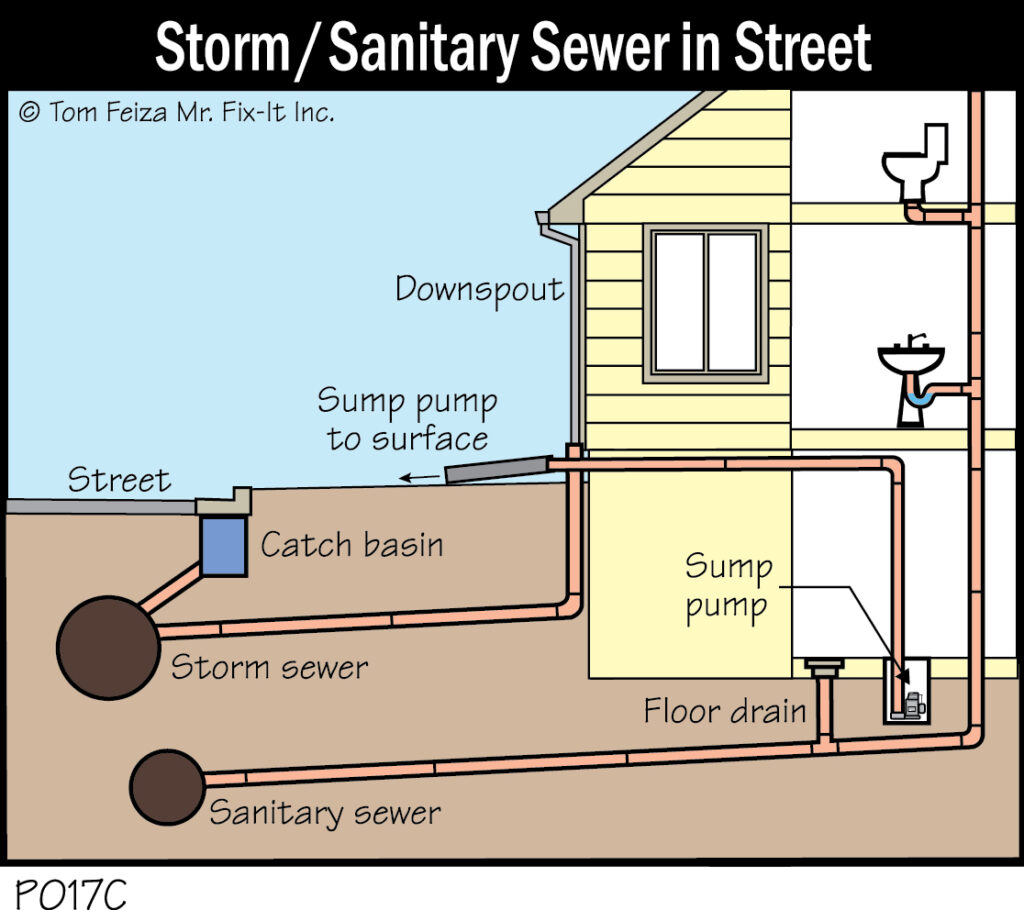You probably know that a storm sewer has something to do with rainwater. And then there’s the sanitary sewer, which we tend to ignore unless it starts backing up and overflowing. Your home has two sewer systems – a sanitary sewer and a storm sewer – and you should understand the basics of both.
Most city homes are served by a sanitary sewer system in which wastewater from toilets and sinks travels through the home’s drainage waste and vent plumbing into a sanitary sewer pipe beneath the street. From there it drains or is pumped to a sewage treatment plant. The treated water is released to rivers and streams.
Out in the country, you might have a private septic tank and drain field system that treats this sanitary waste and releases treated water into the soil.
Storm sewers handle rainwater. In cities, this water is collected from home gutters and roadway catch basins and routed to a underground storm sewer pipe system beneath the street. The storm sewer releases water to rivers and streams without treatment. In the countryside, rainwater may be routed through ditches to rivers and streams.
All modern systems keep the sanitary sewer and the storm sewer separate so the treatment plants won’t become overloaded with rainwater. Excessive rainwater in a sanitary sewer can cause a backup inside your home.


